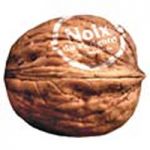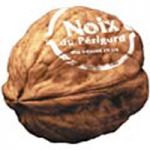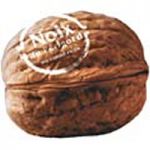 |
AOC
Périgord walnuts For 17,000 years
People have been eating walnuts in the Périgord. Indeed, walnut residue has been found in Cro-Magnon habitations. In fact, the Périgord is probably one of the birthplaces of walnuts. Walnut culture was one of the treasures of the Périgord for a long time. It was used for nourishment but also to make walnut oil. This oil was used for various purposes: lighting, soap, paint, and more.
Boosted by international trade -- as gabares brought walnuts and its derivatives to Bordeaux to be sent to Holland, Germany and Great Britain -- walnut groves developed and became part of the picturesque landscapes of the Périgord.
L'AOC Noix du Périgord
In the 19th century, competition from other, more exotic oils pushed merchants to become specialised in table walnuts. Today, several varieties, including some of which originated in the Périgord, make up the AOC (Controlled designation of origin) of the Périgord walnut. 578 communes, most of which are located in the Périgord, make up the production area of the Périgord walnut. These are grouped into four varieties: Franquette, Corne, Marbot and Grandjean. They can be enjoyed fresh, dried or in candy, for example covered in chocolate
Noix du Périgord represents 4 distinctive varieties:

Hard shell. Sweet tasting nut meat with fine texture in mouth.

Big sized round nut. Finely veined nut meat. Preferred variety for the production of fresh nuts.

Medium sized round nut. Only for cracking.
Fleshy nut meat with a pronounced taste.

Elongated blond shell. Medium gauge. Delicate taste.

-

 Recipes
Recipes
-

 Products
Products
-

 Entertaining
Entertaining
-

 Chefs
Chefs
-

 Hints & Tips
Hints & Tips
-

 Glossaries
Glossaries








